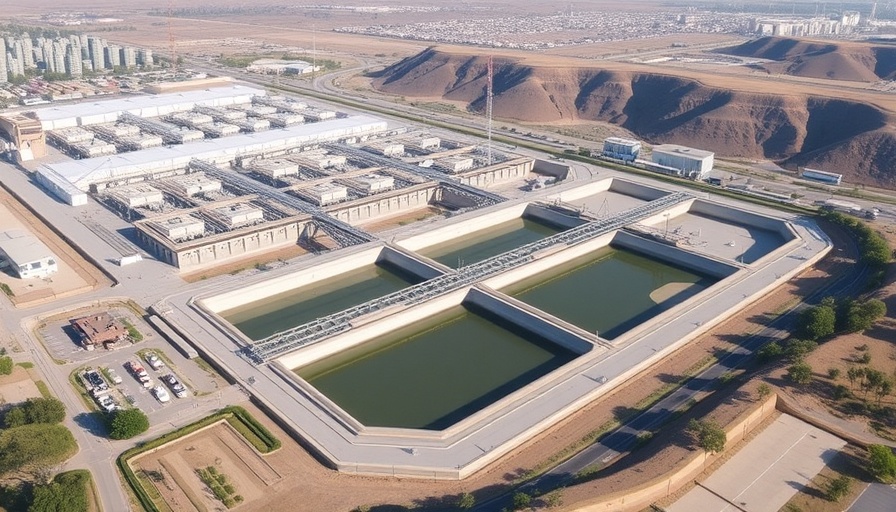
The Future of San Diego’s Water Infrastructure: A $250M Investment
San Diego is set to advance its water management capabilities significantly with the announcement of a $250 million expansion at the Point Loma Wastewater Treatment Plant. As climate change and population growth intensify the demand for efficient water resources, this ambitious project led by construction giant PCL and engineering firm Stantec aims to enhance the plant’s capacity and reliability.
Understanding the Expansion's Scope and Benefits
The expansion will not only upgrade the existing infrastructure but also enable the plant to manage an increasing volume of wastewater efficiently. The facility, which currently processes about 175 million gallons per day, will be equipped to handle an additional 20 million gallons. This increase is crucial as the region’s population continues to grow, placing greater demands on the existing systems.
Moreover, the project addresses environmental concerns by reducing pollutants entering the ocean. Improved processes will enhance water quality and minimize the plant’s overall carbon footprint, aligning with San Diego’s sustainability goals.
A Historical Perspective on Water Management
Historically, San Diego has faced water supply challenges, including droughts and population surges. The recent $250 million upgrade is a response to these long-standing issues, highlighting the importance of proactive measures in urban planning. According to city officials, previous infrastructure investments have significantly reduced incidence rates of waterborne illnesses, illustrating how adequate wastewater management directly impacts public health.
Environmental and Economic Impacts
This expansion project comes with noteworthy economic implications as well. Besides the construction jobs it will create, the enhanced facility may lead to increased tourism in the area as it positions itself as a leader in eco-friendly practices. With water resource management becoming an increasingly public concern, San Diego’s actions can set a benchmark for other urban environments grappling with similar challenges.
Key Takeaways for San Diego Homeowners
For homeowners in San Diego, this expansion signifies a positive move towards reliable water services. Understanding the impact of large-scale infrastructure projects may seem distant, but ultimately, they translate into better-maintained environments and reduced service interruptions. As these changes unfold, homeowners can consider how their property values may be affected, especially as the city becomes more resilient to climate challenges.
Taking Action: Engaging with Local Efforts
As the Point Loma Wastewater Treatment Plant undergoes significant transformation, homeowners are encouraged to get involved. Local forums and community meetings will be held to keep the public informed. Engaging in these discussions allows residents to voice concerns, ask questions, and better understand how the project affects their neighborhoods.
Conclusion: A Necessary Step Towards Sustainability
In essence, the $250 million expansion of the Point Loma Wastewater Treatment Plant marks a pivotal moment for San Diego's water infrastructure. It sets a precedent for sustainable urban development and ensures the city is better equipped to handle future challenges. For residents, being aware of these developments enhances their understanding of local governance and environmental stewardship.
Join the conversation! Engage in your community forums and stay updated on local developments that shape your environment and well-being.
 Add Row
Add Row  Add
Add 




Write A Comment